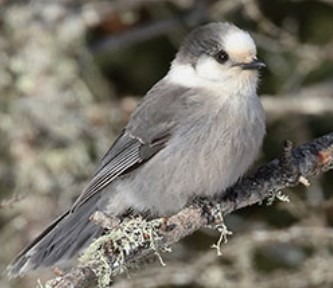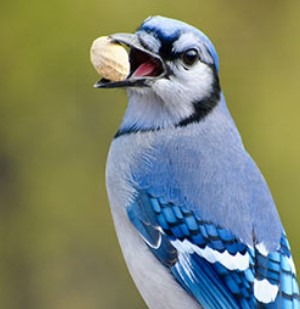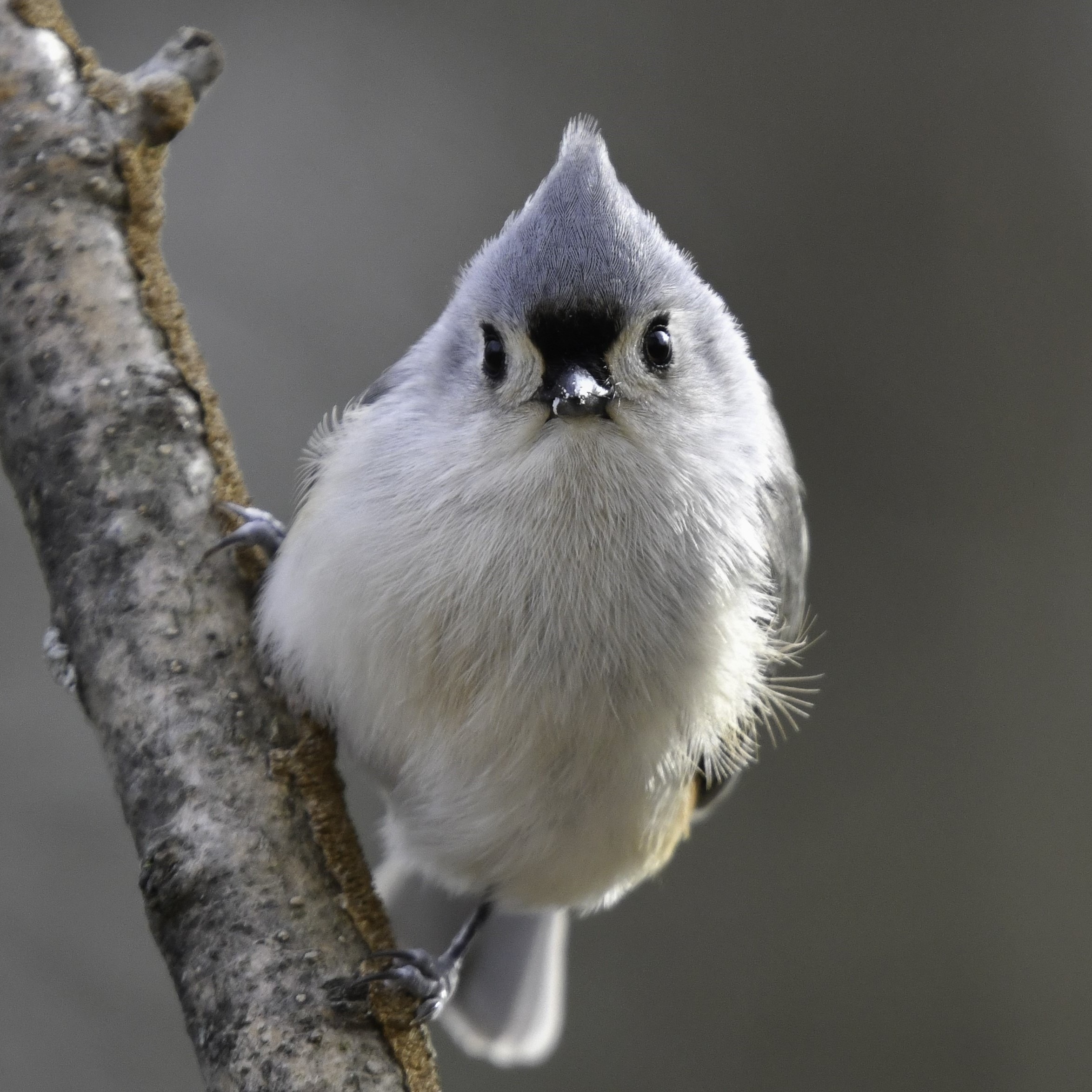

Combien d’oiseaux compterez-vous
pendant le Grand dénombrement des oiseaux de février?
Cet événement de portée mondiale commencera le 12 février.
Pour diffusion le 28 janvier 2021
New York, NY, Ithaca, NY, et Port Rowan, ON — Au cours de la dernière année, beaucoup de gens se sont tournés vers l’observation d’oiseaux à la recherche d’un divertissement et de détente. Mésanges, cardinaux, roselins, sizerins et autres oiseaux font leur part pour remonter le moral des humains. La 24e édition du Grand dénombrement des oiseaux de février (GDOF) est une excellente occasion pour les observateurs, tant débutants qu’aguerris, de mettre à profit leurs talents. Les observateurs de par le monde comptent les oiseaux qu’ils voient pendant au moins 15 minutes de suite au cours d’au moins une journée de la période du dénombrement et communiquent leurs données en ligne.
Le GDOF se déroulera du 12 au 15 février 2021 inclusivement. Visitez le nouveau site Web.
« Le GDOF est une activité simple et agréable que les ornithologues amateurs de tous les niveaux aiment, affirme David Bonter, du Center for Engagement in Science and Nature du Cornell Lab of Ornithology. Les oiseaux sont partout. On peut les compter dans les cours arrière, les quartiers, les parcs de banlieues, les zones sauvages et les villes. Les scientifiques ont besoin des observations provenant de tous les coins du monde pour obtenir de l’information sur les populations d’oiseaux et leur répartition. »
Les participants au GDOF de 2020 – provenant de plus d’une centaine de pays – ont établi de nouveaux records : près de 250 000 listes d’observations de près de 7000 des quelque 10 000 espèces d’oiseaux recensées dans le monde. Les données du GDOF et d’autres programmes de dénombrement révèlent les changements dans le nombre et la répartition des oiseaux sauvages au fil du temps.
Les oiseaux, des agents de bonheur
« En participant au Grand dénombrement des oiseaux de février, les citoyens scientifiques récoltent des données qui nous servent à protéger – aujourd’hui et dans l’avenir – les oiseaux et leurs milieux de vie, affirme Chad Wilsey (@ChadBWilsey), Ph. D., scientifique en chef à la National Audubon Society. Et c’est bon pour nous : des études nous révèlent que prendre le temps d’observer les oiseaux, de les écouter et de les regarder se déplacer est bénéfique pour notre santé. Participer au Grand dénombrement de février, c’est gagnant-gagnant pour les oiseaux et les humains. »
Les participants peuvent entrer leurs données d’observation sur le site Web du GDOF ou sur la plateforme eBird, mais une nouvelle option leur est offerte cette année : l’application Merlin du Cornell Lab of Ornithology. Si vous utilisez cette application pendant le GDOF et que vous enregistrez l’observation d’un oiseau, celle-ci sera également ajoutée à votre décompte du GDOF.
Allez-y, lancez-vous!
« Pourquoi ne pas essayer quelque chose de nouveau? s’interroge Steven Price, président d’Oiseaux Canada. Si vous êtes un observateur expérimenté, lancez-vous le défi de recruter le plus de participants possible pour compter les oiseaux. Si vous ne faites que commencer à faire connaissance avec les visiteurs à plumes de votre cour, voyez si vous pouvez identifier trois espèces qui vous sont inconnues (ou cinq ou dix!). Et d’autres suggestions vous sont offertes sur la page Web du Carrefour. »
La prudence est de mise
Nous prions instamment tous les participants de faire leurs observations en toute sécurité dans le contexte de la pandémie de COVID-19. Respectez les protocoles de santé et de sécurité en vigueur dans votre région, évitez les rassemblements et portez un masque ou un couvre‑visage si vous ne pouvez pas demeurer à au moins deux mètres d’autres personnes ne faisant pas partie de votre bulle. Pour obtenir de plus amples renseignements sur l’inscription au Grand dénombrement des oiseaux de février, rendez-vous à birdcount.org.
Le Grand dénombrement des oiseaux de février est un programme conjoint du Cornell Lab of Ornithology, de la National Audubon Society et d’Oiseaux Canada . Il est rendu possible en partie grâce au soutien du commanditaire fondateur Wild Birds Unlimited.
# #
Rédacteurs – Téléchargez des images avec les crédits pour accompagner vos articles sur le GDOF. https://cornell.app.box.com/s/kjxnf9g23rplmkazj12488i67t6bb6kn
Personne-ressources pour les médias
Andrew Coughlan
Oiseaux Canada
Tél. : 519 586-3531, poste 134 ou 1 888 448-2473 (sans frais)

Mésangeai du Canada Photo : Debbi Schultz

Geai bleu Photo : Patricia Blyler

Mésange bicolore Photo : Deborah Bifulco
À propos d’Oiseaux Canada
Oiseaux Canada, autrefois appelé Études d’Oiseaux Canada, est le chef de file des organismes de bienfaisance voués à l’étude et à la conservation des oiseaux au Canada. Oiseaux Canada mène des programmes scientifiques dans les 13 provinces et territoires du pays ainsi que des programmes de recherche de portée internationale. Près de 60 000 citoyens scientifiques appuient le travail d’Oiseaux Canada chaque année. Pour en savoir plus : oiseauxcanada.org.
À propos du Cornell Lab of Ornithology
Le Cornell Lab of Ornithology est un organisme sans but lucratif dont on peut devenir membre qui a pour mission d’interpréter et de préserver la diversité biologique de la Terre par la recherche, l’éducation et la science participative axées sur les oiseaux. Visitez le site Web de l’organisme : birds.cornell.edu.
À propos d’Audubon
La National Audubon Society protège les oiseaux et leurs habitats dans l’ensemble des Amériques au moyen de la science, de mesures de promotion et de sensibilisation, de programmes éducatifs et de la conservation sur le terrain. Les programmes d’Audubon destinés aux États ainsi que les centres de la nature, les sections et les partenaires d’Audubon ont une portée inégalée qui atteint des millions de personnes chaque année dans le but d’informer, d’inspirer et d’unir les différentes collectivités dans l’action en matière de conservation. Depuis 1905, la vision d’Audubon est celle d’un monde où les humains et les espèces sauvages s’épanouissent. Audubon est un organisme sans but lucratif. Pour en savoir davantage : Audubon.org et @audubonsociety.

